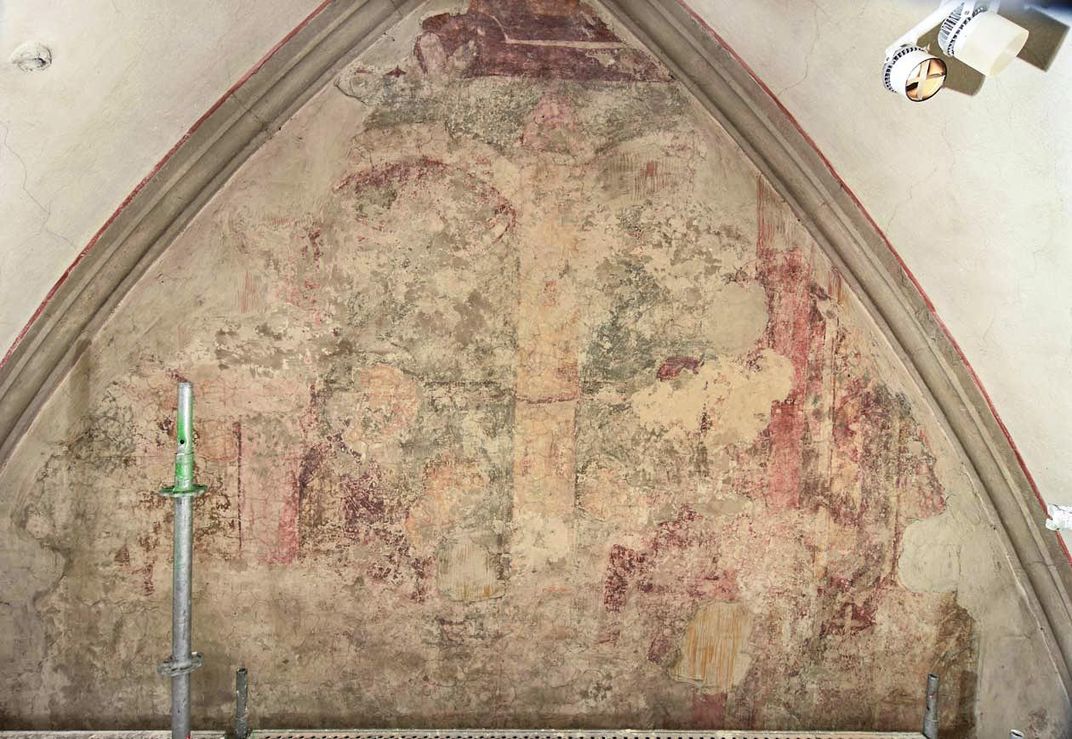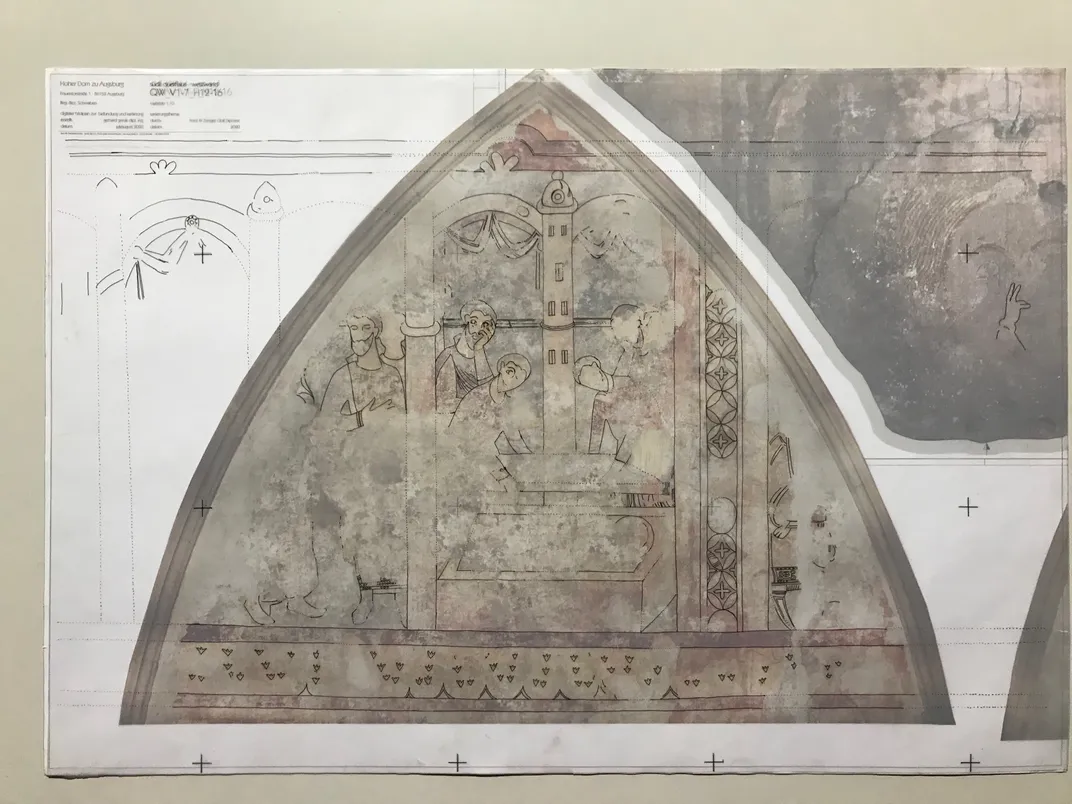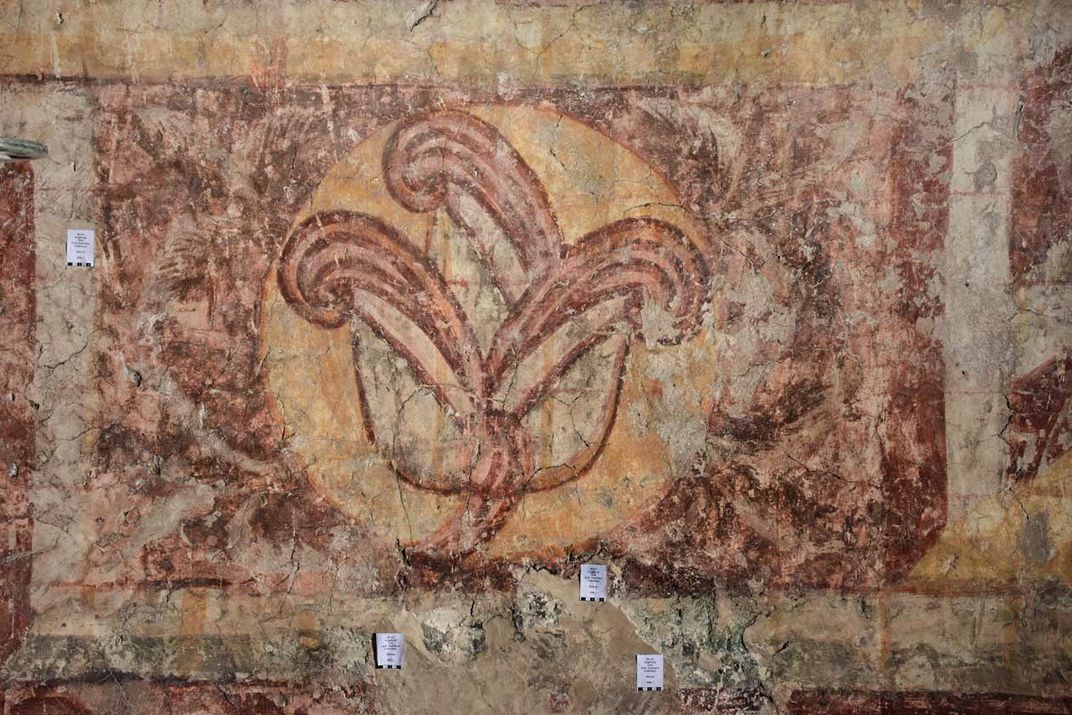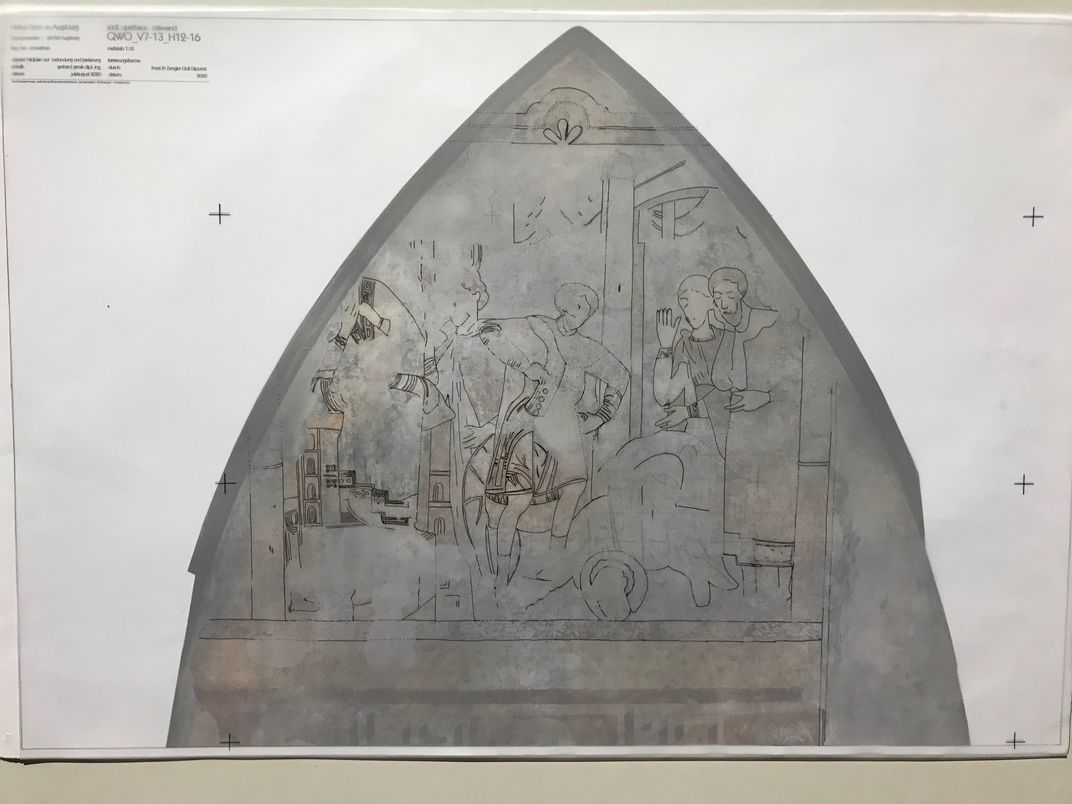1,000-Year-Old Bavarian Frescoes Depict Life and Beheading of John the Baptist
The paintings, which adorn the Augsburg Cathedral in southern Germany, are among the oldest of their kind in northern Europe
:focal(612x366:613x367)/https://tf-cmsv2-smithsonianmag-media.s3.amazonaws.com/filer/4a/09/4a090bc0-ec78-4eca-937d-fe264fde710b/wandbild_an_der_ostwand_des_sudquerhauses_im_augsburger_hohen_dom_foto_angelika_porst.jpg)
A rare series of frescoes spent centuries hidden beneath whitewash on the walls of the Cathedral of Augsburg in Bavaria, Germany, only to be rediscovered during the 20th century. Now, researchers examining the works anew have confirmed that they date to around 1000 A.D., reports Catherine Hickley for the Art Newspaper.
The findings suggest that the murals, which depict the life and gruesome death of Catholic saint John the Baptist, date back to the original construction of the historic cathedral. As German broadcaster Deutsche Welle reported in December, the artworks number among the oldest medieval wall paintings of their kind in the region.
Modern conservators who uncovered the frescoes in the 1930s and ’80s didn’t realize their age or significance. But dendrochronological tests conducted during construction on the cathedral’s roof in 2009 revealed that the wood in parts of the structure dated to roughly 1000—just a few years after much of the church burned down in 994, Birgit Neuhäuser, a spokesperson for the Bavarian State Office for Heritage Protection (BSOHP), tells the Art Newspaper.
After a careful study of the frescoes that concluded late last year, conservators determined that the frescoes were also older than previously thought. (Early estimates had placed the artworks’ creation around 1065.)
The frescoes “are therefore part of the original decor of the church,” says Neuhäuser. “We can assume that in the case of an important Episcopal church, the frescoes would have been painted soon after the construction, so soon after … 1000.”
Conservators worked to carefully clean and restore the frescoes, which decorate the east and west walls of the cathedral transept. Though many patches are damaged or extremely faded, two scenes and the fragments of a third are still identifiable. These works depict scenes from the life of St. John the Baptist, a first-century preacher who lived in solitude in the desert and baptized Jesus.
One of the better-preserved frescoes portrays John’s beheading around 30 A.D. In the scene, Herod Antipas, the tetrarch of Galilee who ordered John’s death at the request of his wife Herodias and step-daughter Salome, sits on a throne. Another mural in the Augsburg cycle depicts John’s burial, which finds his entombed body surrounded by grieving saints, per a BSOHP statement.
Conservators think that these frescoes would have hung opposite scenes depicting John’s birth and baptism. Per the Art Newspaper, the other murals were likely destroyed to make way for a Gothic window in the 14th century.
In the statement, Bavarian officials compared the Augsburg murals to a similar fresco cycle at the Catholic church of Saint George of Oberzell, a Unesco World Heritage Site on the island of Reichenau in southern Germany. This church was founded in 724 and boasts a series of tenth-century frescoes depicting biblical scenes.
Outside of the Oberzell murals, the Augsburg works are the largest known early 11th-century fresco cycles found in German-speaking countries, says Mathias Pfeil, director of the BSOHP, in the statement.
According to Google Translate, Armin Zürn, pastor of the Augsburg Cathedral, adds in the statement that the murals are “proof of the great design of this spiritual place through the centuries.”
/https://tf-cmsv2-smithsonianmag-media.s3.amazonaws.com/accounts/headshot/nora.png)




/https://tf-cmsv2-smithsonianmag-media.s3.amazonaws.com/accounts/headshot/nora.png)